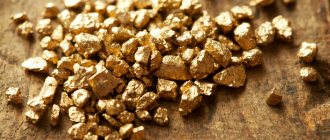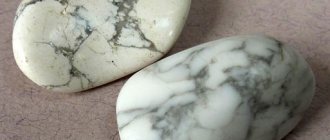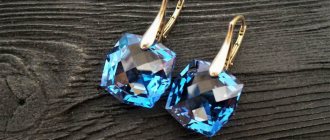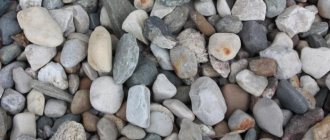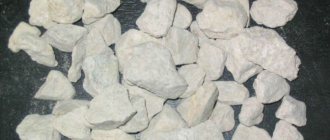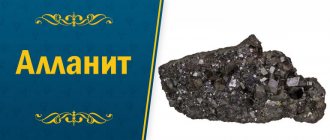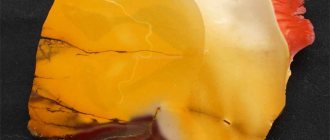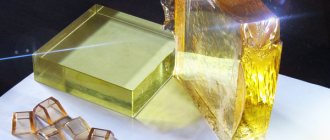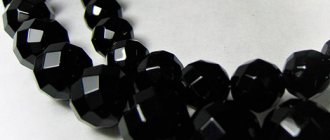Natural stone served as the main building material for primitive man.
All ancient buildings: temples, palaces, fortresses, bridges, aqueducts, ritual structures were erected from natural stone and amaze modern people as amazing “Wonders of the World”.
In many countries: Egypt, Mexico, Greece, Italy, China, Cambodia, India, a large number of outstanding monuments of stone architecture have been preserved, which are the architectural and construction components of the most ancient civilizations that existed on Earth.
Natural stone materials are very strong, durable, fire-resistant, and made from local raw materials.
Nowadays, natural dense stone materials are no longer used for the construction of walls, arches, domes, columns and other load-bearing structures, because They are labor-intensive, have a large mass and high thermal conductivity.
But due to their positive performance and aesthetic qualities, they continue to be widely used for facing work, flooring, road surfaces, etc.
Porous natural materials are used in the construction of walls of residential and public buildings in the form of wall stones and blocks.
Waste from the mining and stone processing industries is used as a filler for concrete and the manufacture of other artificial stone products using mineral and organic binders.
Rocks serve as the main raw materials for obtaining
- natural stone materials (ruble stone, crushed stone) and products (sawn and hewn slabs; shaped parts for cladding buildings and structures; sawn, hewn and chipped stones of regular shape; steps, roofing tiles, etc.);
- binders and artificial stone materials obtained by firing rocks: for example, firing clays (brick), limestones (lime), calcareous marls or mixtures of limestones and clays (cement).
Materials and products made from natural stone have a wide variety of applications in construction.
Light breeds
Light (porous) rocks are used in the form of stones for laying the walls of buildings (instead of bricks) and in crushed form (crushed stone) for the production of lightweight concrete.
Heavy rocks
Heavy (dense) rocks are used in the form of rubble stone for foundations and walls of unheated buildings, and crushed stone from them is used for the production of heavy concrete.
Piece
Piece (sawn, hewn, polished, and sometimes polished) products made from natural stone are used as facing materials. Such claddings serve:
- to protect structures from destructive external influences (structural cladding of hydraulic structures, bridge supports, embankments, etc.);
- to achieve a certain artistic effect (for example, internal architectural wall cladding with polished stone slabs);
- for external cladding of plinths, for partial or complete cladding of external walls.
Russia is rich in deposits of various rocks, including colored (decorative) rocks, which are high-quality materials for external and internal cladding of permanent buildings and structures. Thanks to systematic exploration of natural resources, numerous deposits of valuable mountain natural stone materials for construction have been discovered and are being developed.
Advantages and disadvantages
Today, natural building stone is represented by various types in a wide price segment. But all its varieties have common advantages, among which the following are worth noting:
- Environmental friendliness. This is one of the safest materials for health, so it is actively used in premises for any purpose.
- Durability. Even after many years and changes in appearance, building stones look beautiful and noble.
- Resistance to mechanical stress and fire.
- A variety of structures, patterns, types, which allows you to create an original, unique interior.
- Many options are quite affordable.
The main disadvantage is the large mass of the named material, leading to the need to strengthen the foundation. High absorption properties also contribute to additional weight gain.
Nowadays, wild building stones can be found more and more often - this is a universal material characterized by extensive color variations. High strength characteristics provide a wide range of applications - both decorative and construction.
Construction classification of stone materials
Natural stone materials and products can be divided into the following main types.
Rough stone materials
- rubble stone - pieces of irregular shape (torn rubble), with a size (in diameter) of more than 150 mm, mined by blasting, or irregular slabs (bedded rubble and flagstone), obtained by breaking out layered rocks (mainly limestones and sandstones); I also obtain rubble stone as waste from sawing limestone, shell rock, tuff, etc.;
- crushed stone - pieces ranging in size from 5 to 150 mm, formed when crushing stone; Natural sharp-angled crushed stone (gruss) is also found;
- sand and gravel (rounded gravel, natural crushed stone), obtained without processing or by sifting loose rocks (sometimes with washing and partial crushing of excessively large pieces)
Products and profiled parts made of natural stone
- piece stone and slabs of regular shape with variously processed surfaces (roughly chopped, hewn, sawn, ground, polished);
- piece shaped (profiled) from wood of different shapes with differently treated surfaces (steps, window sills, profiled stones and slabs);
- roof tiles (slate), floor tiles and slabs, etc.
The high strength and hardness of most rocks make their extraction and processing very labor-intensive. Therefore, stone mining and processing operations are increasingly being mechanized: Soviet engineers have proposed new mining methods and a number of mechanisms to facilitate and reduce the cost of obtaining stone materials and products
GABBRO
Deep (igneous) crystalline rock, usually coarse- to medium-grained; has the same structure and scope of application as granite.
Color palette: from dark gray-green to black; green varieties are called olivine gabbro.
Physical properties: easy to machine, polishes very well and retains surface shine for a long time; polished acquires depth, which distinguishes gabbro from other black stones. Highly durable, tolerates frost well, and has increased resistance to weathering.
Disadvantage: In high traffic areas, gabbro floors quickly lose their polish.
Application of gabbro:
- facade cladding, exterior finishing of buildings
- flooring in private houses
- monumental art, monuments
Obtaining stone products
It is impossible to mine rocks intended for cladding structures using the usual explosive method, since this will cause thin cracks to form in the stone, reducing its weather resistance.
The development of these rocks consists of the following main operations:
- a) separation from an array of blocks - relatively large in size and, if possible, of the correct shape;
- b) preparing the block for cutting, leveling insufficiently correct surfaces);
- c) cutting the resulting blocks into products of the required shape or sawing the blocks into slabs;
- d) processing of edges and surfaces of stone products.
To separate the “blocks,” cracks in the rock are used, or drilling is carried out followed by wedging (burocline method).
Application of natural stone products
The use of natural stone products in these cases makes it possible to obtain weather-resistant and at the same time decorative cladding. Natural stone materials from loose rocks (sand, gravel), as well as crushed stone, are used to produce artificial stone materials - concrete and mortars, cemented with various binders. In the construction of roads, natural stone materials are widely used, both in the form of sand and gravel, and in the form of chipped or roughly hewn products (paving stones, checkers, side stones).
The study of the properties of natural stone materials is greatly facilitated if we are based on the classification of rocks, taking into account the conditions of their formation (rock genesis). The principles of such a genetic classification were established by M.V. Lomonosov in 1763. Subsequently, as geology developed, this classification was improved; Soviet scientists have done especially much in this area. The conditions for the formation of rocks predetermine the general nature of the structure of the rocks of a given group. The basic properties of rocks, and therefore the conditions for the use of natural stone materials, depend on the structure.
LABRADORITE (peacock stone)
Igneous granular crystalline rock.
Color palette: usually black and gray, occasionally light. The decorative effect is given to the stone by rainbow spots on the surface of blue-green, less often golden-yellow or orange shades.
Physical properties: high strength, wear and frost resistance; water absorption no more than 0.21, density 2.71; The stone is moderately hard, brittle, highly polished, and extremely decorative.
Applications of labrodorite:
- exterior decoration of buildings
- cladding of floors, columns, wall plinths
- monumental architecture
Natural stone materials types
The following most important types of rocks and natural materials are most widely used in construction:
- I. Igneous (igneous) rocks: a) deep-seated massive: granites, syenites, diorites, gabbro;
- b) massive eruptions: porphyry, porphyrite, diabase, basalt, andesite, trachyte;
- c) loose clastic: volcanic ash, pumice;
- d) clastic cemented: volcanic tuffs.
- a) chemical precipitation: gypsum, anhydrite, some types of limestone, dolomite, magnesite, calcareous tuff;
- a) modified igneous rocks - gneisses;
The use of natural stone materials in our construction is constantly increasing, new regional quarries are being organized with comprehensive mechanization of the extraction and processing of stone, crushed stone, gravel and sand, as well as piece stone products.
Properties of crushed stone
Crushed stone is one of the most common materials for construction work. It is used to create roads, design parks, and is also present in concrete. It is made from rocks and has a loose structure.
The strength of the material is determined by exposure to high pressure and crushing in a special tank. A wide marking scheme is used, which determines the specifics of the application.
Frost resistance characteristics reflect the number of freezing cycles without loss of original properties; these parameters are specified in GOST 8269-87. Radioactivity is also worth noting. It is crucial when choosing materials for the construction of residential buildings.
QUARTZITE
Fine-grained sedimentary rock; formed as a result of modification of siliceous sandstones. Known for a long time, you can see it in the decoration of the Church of the Savior on Spilled Blood and the upper part of the Lenin Mausoleum.
Color palette: gray, pink, yellow, the most decorative are raspberry-red and dark cherry, sometimes white quartzites are found; the color is determined by the presence of glandular pigment.
Physical properties: it has very high hardness, but can be polished to a very high quality, therefore it is considered a very decorative finishing material. It is extremely durable, acid-resistant, frost-resistant, has a compressive strength of 100-450 MPa, a low water absorption coefficient and a density of about 2.7 g/cm3.
Applications of quartzite:
- monumental construction
- cladding of facades and plinths
- interior decoration
- paving of terraces, platforms, retaining walls
TRAVERTINE
Calcareous tuff, an intermediate form of stone between limestone and marble. Ideal material for facing work.
Color palette: the most common shades are from light beige to walnut; travertines of darker, brownish shades are less common; There are also intensely colored travertines - red and yellow stones from Iran.
Physical properties: low abrasion coefficient, high thermal conductivity and heat resistance, lightness; easy to cut, grind and polish; does not slip when exposed to water. The properties of travertines depend on the conditions of origin of the stone: the more organic inclusions it contains (shells, leaves, etc.), the more porous it will be; density is determined by the depth of the stone. A special feature of the stone is its ability to change after mining: pale varieties can turn yellow due to the oxidation of iron salts, and its hardness increases over time.
Darker travertines have better technical qualities. White travertines are usually left unpolished: their warm color contrasts favorably with the cool white color of polished marble.
Applications of travertine:
- cladding of facades and external walls
- paving floors
- cladding of fireplace portals, stairs, allocation of zones, design of arches, niches, etc.
- finishing of bathrooms, saunas
PORPHYRY
The general name for rocks that have a porphyry structure: unevenly granular, when large crystals of mineral inclusions (porphyry deposits) are found in the ground mass (usually volcanic glass). In terms of chemical composition and properties, porphyry is close to granite. The name comes from a peculiar red rock with large white phenocrysts of orthoclase (one of the varieties of feldspars); it was used in ancient Rome for the manufacture of luxury items and statues of the Caesars.
Color palette: dark red, purple porphyry are extremely decorative and were used in monumental art; There are also gray, yellow, pink and brown of various shades.
Physical properties: hard, extremely decorative, chip-resistant, durable; easy to polish; has a low water absorption coefficient. Certain characteristics depend on the composition of the stone.
Application of porphyry:
- cladding of floors, columns, wall plinths
- monumental architecture
- paving of terraces, sidewalks, paths, car entrances
